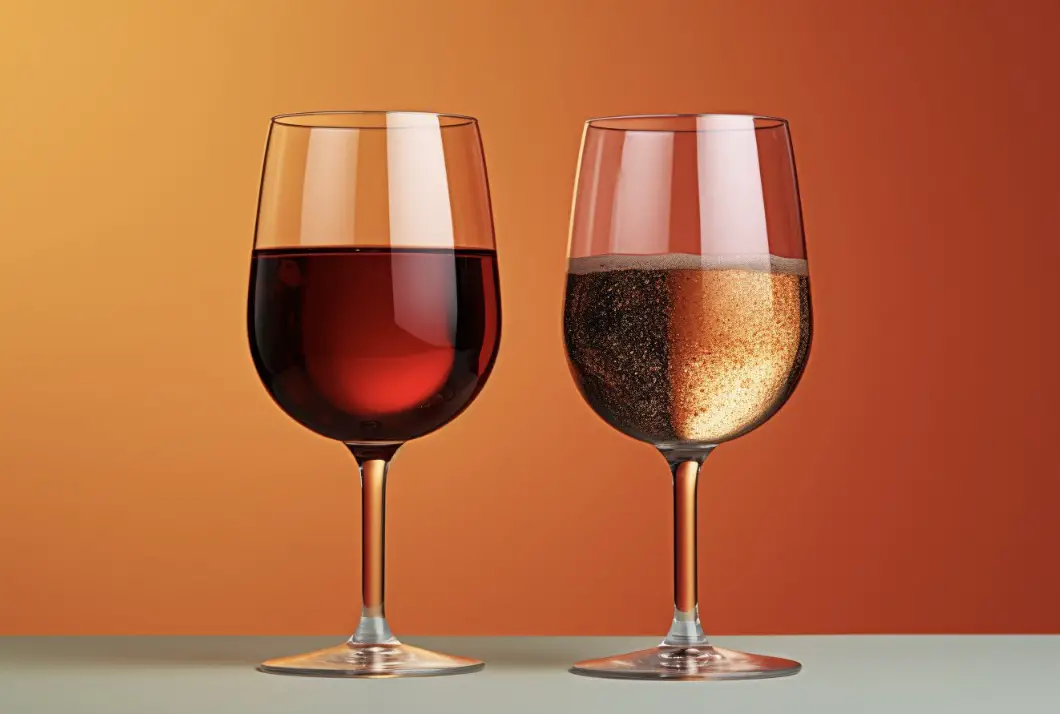As an expert brewer, one question I get asked quite often is, “Is warm beer bad for you?” It’s an interesting question, and one that I’m more than happy to explore with you today. So, let’s dive in and find outwhether warm beer is bad for you or not.
The Temperature of Beer: A Personal Journey
Before we go any further, I’d like to share a personal experience. A few years ago, I was traveling through Europe and had the opportunity to visit several breweries and bars. I noticed that the temperature of beer served in these establishments varied quite a bit. In some places, especially in the UK, the beer was served at what I would consider a “warm” temperature. In other countries, like Germany, the beer was served at a more typical “cold” temperature.
As I sampled these beers, I noticed that the warmer beers had a more pronounced flavor profile. The malty and hoppy notes were more apparent, and there was a subtle complexity to the taste that I hadn’t experienced before. I also found that the cold beers were more refreshing and crisp, making them a great choice for a hot summer day.
The Brewing Process and Temperature
The brewing process plays a significant role in determining the ideal serving temperature for a beer. During fermentation, yeast consumes sugar and produces alcohol and carbon dioxide. Lager beers are brewed using a process called bottom fermentation, where the yeast sinks to the bottom of the fermentation vessel and works at a colder temperature. This process results in a cleaner, crisper taste, which is often best enjoyed at colder temperatures.
On the other hand, ale beers are brewed using top fermentation, where the yeast ferments at a warmer temperature and remains at the top of the vessel. This brewing method produces more complex flavors and aromas, which can be better appreciated when served at a warmer temperature.
The Role of Smell in Beer Tasting
Our sense of smell plays a significant role in our overall perception of taste. When beer is served cold, its aroma is less pronounced, which can make it more difficult to detect the subtle nuances of flavor. As the beer warms up, the volatile aromatic compounds become more active, allowing you to experience a more complex and enjoyable bouquet.
The Appearance of Beer
The temperature of beer can also affect its appearance. Cold beer tends to hold its carbonation better, resulting in a more lively and visually appealing pour. Warm beer, on the other hand, may lose some of its carbonation, leading to a flatter appearance.
Health Concerns with Warm Beer
One of the primary concerns people have about warm beer is the potential for bacterial growth. Beer is not an ideal environment for most bacteria due to its acidity, alcohol content, and the presence of hops. However, if a beer is exposed to extreme temperatures or contaminated with bacteria during the brewing process, there is a slight risk of bacterial growth.
That being said, the risk of bacterial growth in properly stored and brewed beer, whether warm or cold, is minimal. The main health concern with warm beer would be if it has been exposed to high temperatures for an extended period, which could cause it to spoil and become unpalatable.
Personal Preference
Ultimately, the temperature at which you enjoy your beer comes down to personal preference. Some people prefer the crisp, refreshing taste of a cold lager, while others enjoy the complex flavors that emerge when an ale is served at a warmer temperature. It’s essential to experiment and find the serving temperature that best suits your palate.
Conclusion
So, is warm beer bad for you? The answer isno, warm beer is not inherently bad for you. The ideal temperature for serving beer depends on the brewing process, the beer’s style, and your personal preferences. As a beer enthusiast, I encourage you to explore different serving temperatures and find the one that brings out the best flavors and aromas in your favorite brews.
To sum up, here are 5 facts about beer temperature:
1. The brewing process plays a significant role in determining the ideal serving temperature for a beer.
2. Ales are generally better appreciated when served at a warmer temperature, while lagers are best enjoyed cold.
3. The temperature of beer can affect its aroma, flavor, appearance, and carbonation.
4. The risk of bacterial growth in properly stored and brewed beer, whether warm or cold, is minimal.
5. Ultimately, the temperature at which you enjoy your beer comes down to personal preference.
FAQs
Is it okay to drink beer not cold?
Yes, it is okay to drink beer not cold. In fact, some beer styles, such as stouts, porters, and certain ales, are traditionally served at cellar temperature (around 50-55°F or 10-13°C) to enhance their flavor profiles. However, personal preference plays a role, and some people may prefer their beer chilled.
What happens if beer is not chilled?
If beer is not chilled, it will not be at its optimal serving temperature, which can affect the overall taste, aroma, and drinking experience. Warmer temperatures may cause the beer to lose carbonation, making it taste flat, and can also enhance the perception of alcohol and bitterness. Additionally, certain flavors and aromas may become more pronounced, potentially making the beer taste off-balance. However, the beer will still be safe to drink if it has been stored properly.
Can I drink beer without cold?
Yes, you can drink beer without it being cold. However, the temperature of the beer can affect its taste and overall experience. Most beers are best enjoyed when chilled, but some styles, like stouts and porters, can be enjoyed at slightly warmer temperatures. Drinking beer at the appropriate temperature allows the flavors and aromas to be fully appreciated.
Is it OK to drink non chilled beer?
Yes, it is perfectly fine to drink non-chilled beer. In fact, some beer styles, like stouts and ales, are traditionally served at slightly warmer temperatures to enhance their flavor profiles. However, personal preference plays a role, and some people may prefer the taste and refreshment of chilled beer.
How long can beer stay warm before it goes bad?
The shelf life of beer can vary depending on factors like storage conditions and the type of beer. Generally, if stored at room temperature (around 70°F or 21°C), an unopened beer can last for 3-6 months before its taste starts to degrade. However, it is recommended to store beer in a cool, dark place (around 50-55°F or 10-13°C) to maintain its quality and extend its shelf life up to two years. Keep in mind that beer does not “go bad” in the sense of becoming unsafe to drink, but its flavor and quality will deteriorate over time when stored at warmer temperatures.




